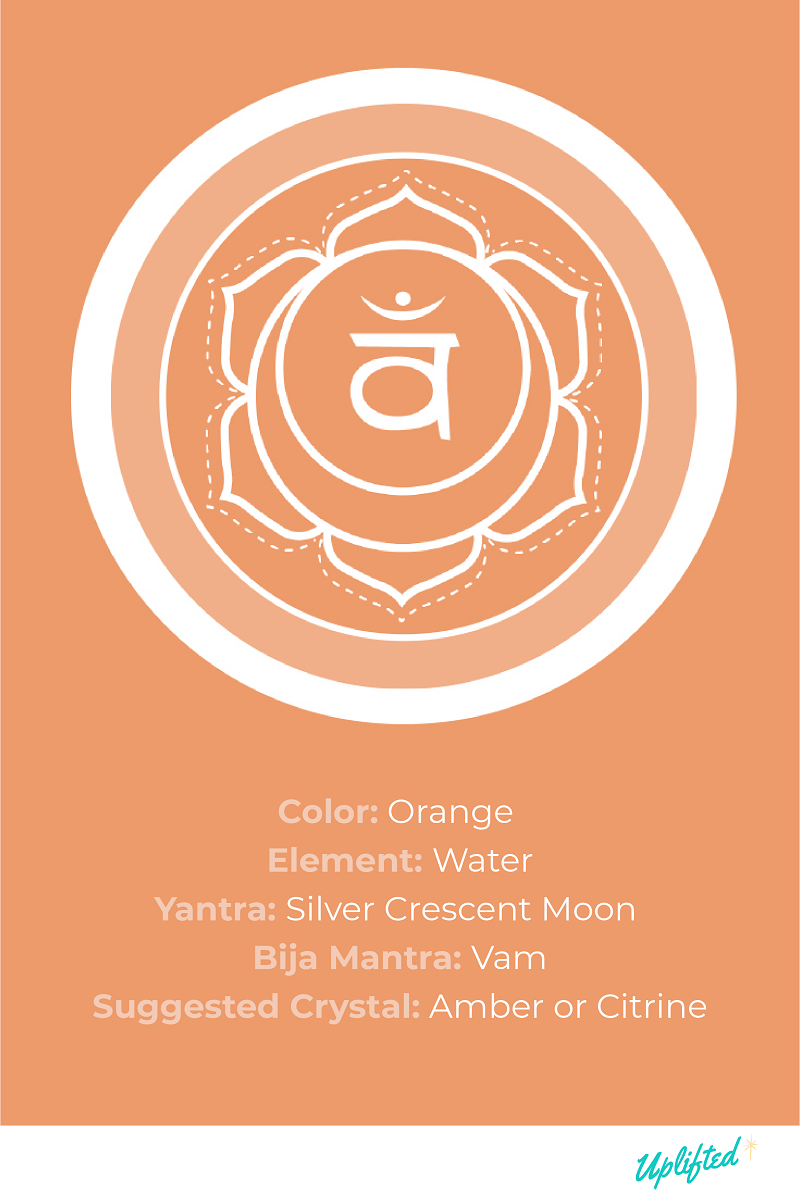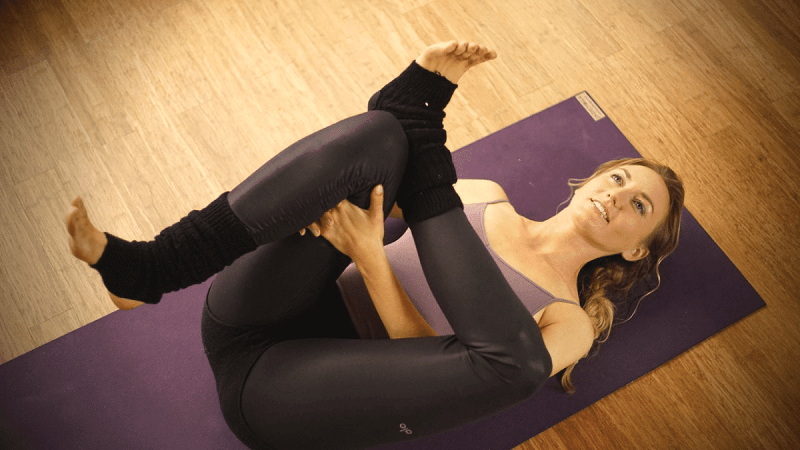Mudras are a powerful addition to any blossoming yogi’s practice. When we use mudras (yogic hand gestures that seal and direct energy), we infuse a deeper level of intention into our practice. Some mudras, like varuna mudra, help regulate the elements within the body. Varuna mudra balances the water element within the body and pairs perfectly with meditation to help you go with the flow.
This mudra is great for beginners, but it also has the ability to channel powerful energy within the body. From mental clarity to clear communication, there is HUGE potential held within this simple gesture. Let’s take a look at the mudra, what it means and how to practice it.
What Is Varuna Mudra?
Yoga mudras are “seals” or hand gestures that hold and release energetic intention. You’re probably most familiar with Anjali mudra, the sacred gesture of greeting with hands pressed together at the heart. There are many, many mudras out there though! Varuna mudra is named for the Hindu god of water, Varun. It is also commonly referred to as jal-vardhak mudra, which also comes from the Sanskrit, jal, meaning “water,” and vardhak, meaning “enhance.”
According to Indian mythology & Ayurvedic tradition, there are five elements in the body. Agni (fire), Vayu (air), Akasha (ether), Bhumi (earth), and Jala (water). Varuna mudra works to unite fire and water, thus increasing the element of water and its healing properties. It’s believed that regular practice with this mudra can increase fluid circulation within the human body. Other elements of nature like the planets, elements, and chakras are also associated with jal-vardhak mudra.
Planet(s): Mercury
Element(s): water element, fire element
Chakra(s): Svadhisthana chakra (sacral chakra)
Balance Your Water Element & Other Benefits of Varuna Mudra
To put it simply, this mudra is done by joining the tips of your little finger and thumb. But as with every mudra, this is more than just a hand gesture. This particular Varuna mudra helps with water balance – both physically and mentally. Here are several benefits to practicing varuna mudra:
- Promotes mental clarity and improves concentration
- Purifies negative emotions and patterns embedded in the mind
- Increases confidence and communication
- Keeps the flexible and adaptable
When you perform Varuna mudra, you join together your smallest finger and your thumb. The pinky is associated with the water element, and the thumb is linked to the fire element. So with this particular mudra, the water element increases in your body. Mentally, this gesture is often attributed to open, fluid communication skills and balanced emotions. According to Ayurveda, Varuna mudra can also help with dryness, liver or kidney issues, and blood circulation. You might try this mudra when you feel dehydrated or overwhelmed by emotions.
How To Do Varuna Mudra
To perform this mudra, extend your fingers out and your palms open, then touch the tip of the little finger and the tip of the thumb together with a very light pressure. Your other three fingers will remain extended, but keep them comfortable. Because therapeutic mudras are believed to balance the elements within the body, we need to give them a little more time. It is recommended that Varuna mudra be practiced three times daily, 15 minutes each, for a total of 45 minutes. This is believed to help you obtain all its benefits.
1. Find a comfortable position
First, start in a comfortable position. This position can be done seated, lying down, or standing up. Just make sure you’re comfortable. If you have pain in your low back when seated on the floor, try placing a cushion or a blanket underneath your seat. Before you begin, rest your hands on your lap with palms facing up. Close your eyes and lower your gaze.
2. Allow your mind to relax
Take a deep breath in for a count of four. Exhale for a count of four. Repeat this three times, or until your body and mind start to relax.
3. Find your hand position
Extend your palms out, and bring the little finger and thumb together until they connect. Keep all your other fingers straight out.
4. Hold the pose
Allow your mind and body to relax. Think positive thoughts as you continue to take deep breaths. Begin by remaining in this practice between 8 – 10 minutes. To gain maximum benefits, it’s said you should practice Varuna mudra for three to four rounds a day.
Pair These Yoga Practices With Varuna Mudra
When practicing Varuna Mudra, it is best to do so in a relaxed and composed environment. The element of water is often associated with feelings of tranquility, peace, and flexibility. If you’d like, you can try to emulate some of these characteristics in your meditation or yoga room.
When practiced with other yoga tools, we can amplify and focus the therapeutic mudras and make them more beneficial. Here are a few practices that pair well with Varuna mudra.
- Restorative Yoga. The benefits of restorative yoga are very similar to Varuna mudra. This asana practice is all about lying in a relaxed and supported way so that your muscles can rest. Try a reclined butterfly pose, lying on your back with the soles of your feet together. Let your knees fall open and rest on blocks or bolsters. Take Varuna mudra with your fingers, close your eyes, and feel the beneficial effects of stillness. If you find it hard to focus, you can imagine your breath like ocean waves, using the cleansing water to soothe your mind and release tension in your body.
- Yogic chanting, particularly the mantra “Om.” If you’re more interested in Sanskrit study, chanting would be a great addition to this mudra. Come to a comfortable seat and find Varuna mudra with your fingers. See our instructions above. As you begin to settle into your meditation, bring your attention to your breath. When you chant the Sanskrit mantra Om, try to use every section of your mouth, from the back of your throat moving forward. You can repeat this chant as many times as you like, but we like to suggest at least five rounds.
- Agni Mudra. This is the sister mudra to Varuna mudra. Agni means fire, so this mudra works to increase the levels of fire in the body. You can use these two gestures to help achieve a balance within your body. For this mudra, draw your ring finger in towards the base of your thumb. Then take your thumb and rest it on your ring finger. Apply a bit of pressure, but make sure it’s not uncomfortable for you. Your other three fingers (little finger, middle finger, and index finger) should stay extended.
Experience 3 Training Videos from Inside My 200-Hour Online YTT

YOU MIGHT ALSO LIKE
- 8 Kundalini mudras for health and energy
- Vitarka Mudra: What It Is and How Do You Use It?
- Shakti Mudra: What It Is and How Do You Do It?
- Garuda Mudra: What It Is and How Do You Use It?
- Kali Mudra: What It Is and How Do You Do It?
- Shunya Mudra: What It Is and How Do You Do It?
- Varuna Mudra: What It Is and How Do You Use It?
- Vayu Mudra: What It Is and How Do You Use It?
- Venus Mudra: The Seal of Clarity & Empowerment
- Karana Mudra: What Is It And How Do You Use It?
- Gyan Mudra: What Is It And How Do You Use It?
- Dhyana Mudra: What Is It And How Do You Use It?
- Lotus Mudra: What Is It And How Do You Do It?
- Dharmachakra Mudra: What Is It And How Do You Do It?
- Yoni Mudra: What Is It And How Do You Use It?
- Apana Mudra: What Is It And How Do You Use It?
- 10 Powerful Types of Mudras (With Pictures)
Learn how to do 11 of the most popular yoga poses correctly. Free video + PDF download.













